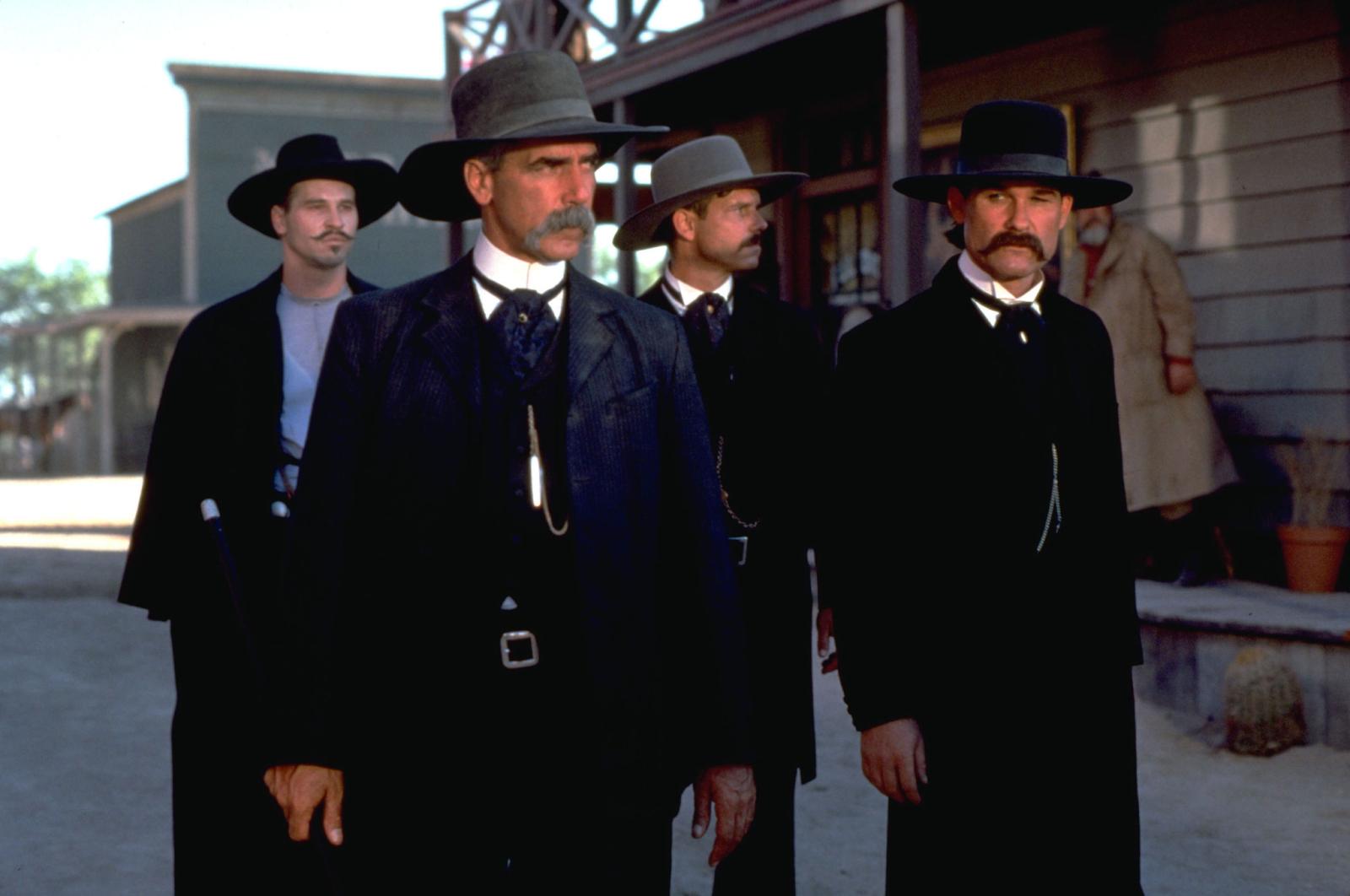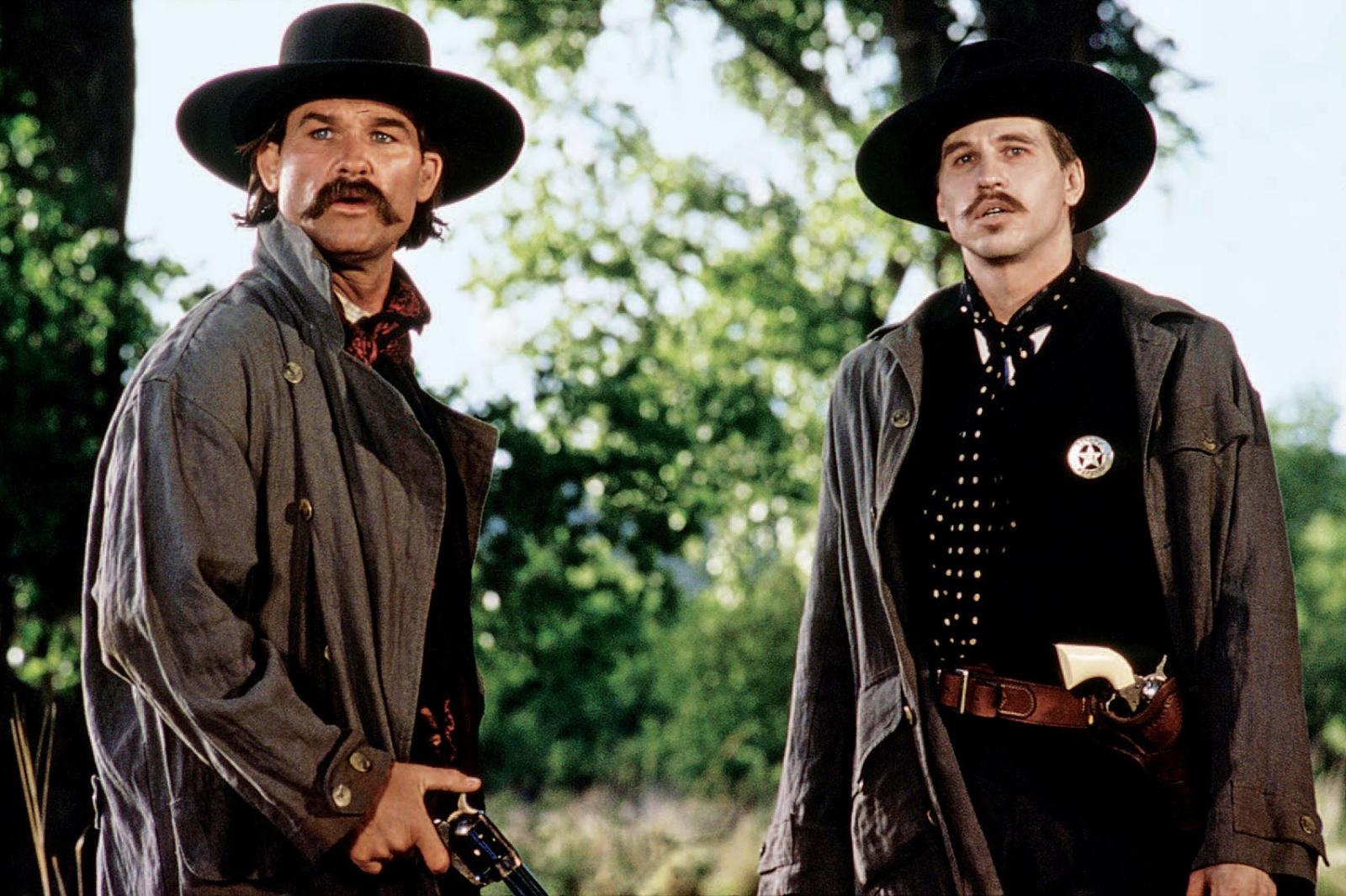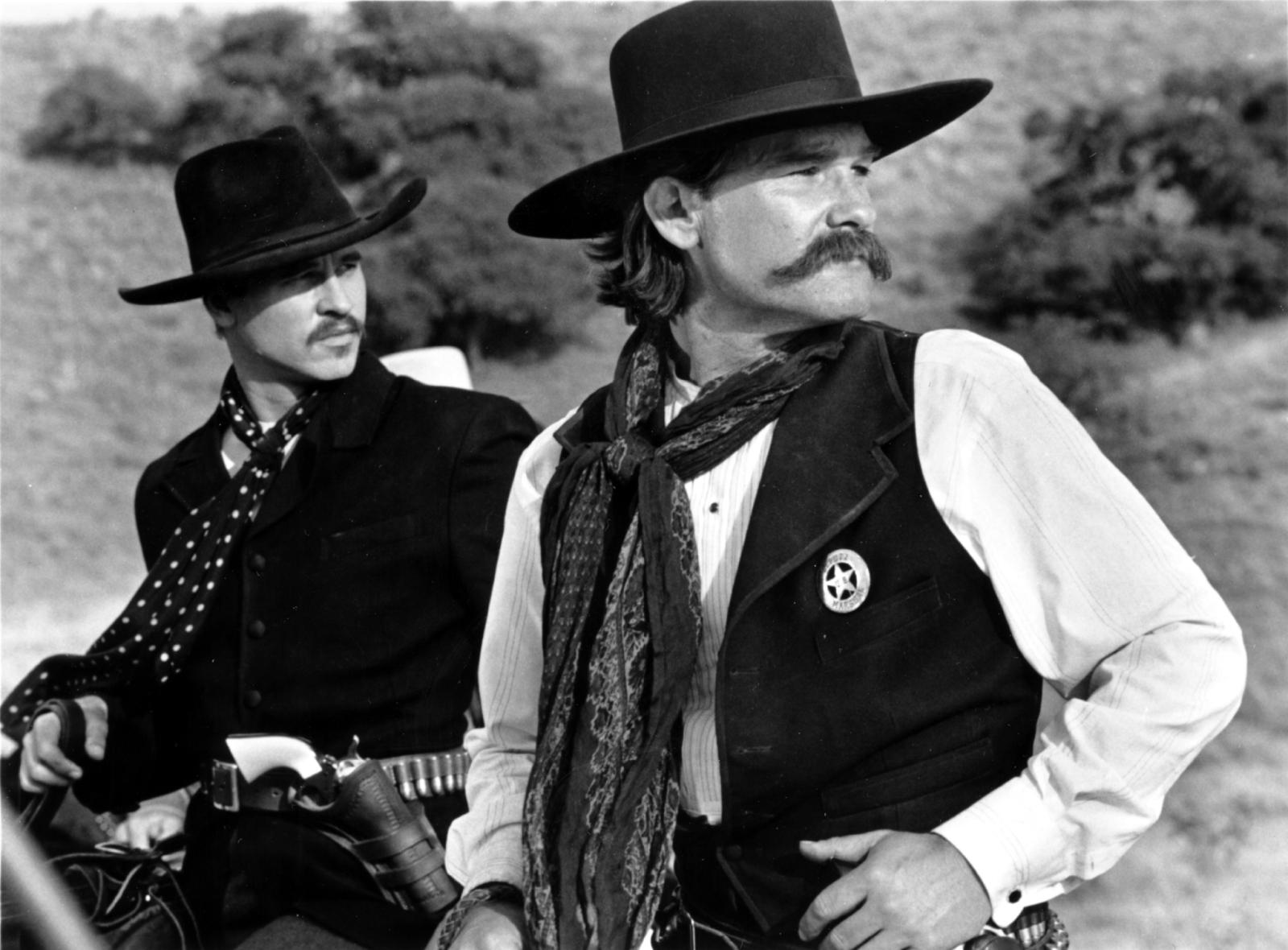Tombstone (1993): 20 Behind-the-Scenes Facts You Didn't Know

The production was a mess.
The director on paper wasn't the one calling the shots. Actors stayed in character off camera, scenes were restructured in post, and one of the greatest western performances of the '90s was nearly buried under a failing shoot. Here are 20 behind-the-scenes facts about Tombstone—plus the real story behind Doc Holliday's final words.
1. Kurt Russell Quietly Took Over Directing Duties
George P. Cosmatos was credited as director, but according to multiple cast and crew accounts, Kurt Russell was making the key decisions. He met with the studio, reshuffled scenes, and handpicked which sequences to keep. Cosmatos later admitted that Russell was effectively in charge. Russell never took credit publicly, but his control helped stabilize the film when it was falling apart.
2. The Shoot Nearly Broke the Cast
Filming in the Arizona heat, wearing heavy 1880s wardrobe, and working unpredictable hours left the cast physically wrecked. Michael Biehn called it boot camp. Sam Elliott said it was the hardest shoot of his life. The grit on screen wasn't just performance—it was survival.
3. Willem Dafoe Was Almost Cast as Doc Holliday
Before Val Kilmer was cast, Willem Dafoe was a serious contender. He had the right presence and unpredictability, but the studio feared his roles in Platoon and The Last Temptation of Christ might stir controversy. The offer was never made. Kilmer took the role, and his performance became iconic.

4. The Studio Didn't Want Kurt Russell at First
Russell wasn't on the studio's short list. They pushed for more conventional leading men and questioned everything from his tone to his mustache. But Russell believed in the role, fought for it, and eventually convinced them. He didn't get the job by fitting their expectations—he got it by refusing to.
5. The Script Was Rejected by Nearly Every Major Studio
Kevin Jarre's original script was dense, historical, and loaded with characters. Studios passed, calling it too long and too serious. The project stalled until an independent backer came forward. The irony: when the film became a hit, some of those same studios tried to buy the distribution rights.
6. The Ending Was Rewritten Late in Production
Originally, the film ended with Wyatt Earp walking away alone—no hospital scene, no snow-dusted epilogue. Test audiences found it cold and unfinished. The studio approved a rare, expensive rewrite. New scenes were shot, giving the film emotional closure it was missing. It changed the tone—and preserved its legacy.
7. The Shootout Took Four Days to Film
The gunfight scene that looks like a few minutes of chaos on screen took four days to get right. Dozens of setups, live gunfire, and timed explosions pushed the crew to the limit. Some team members reportedly stopped watching monitors and just covered their ears. The result became one of the genre's most memorable shootouts.

8. The Town of Tombstone Objected to the Film
Some locals and historians in Tombstone, Arizona objected to the film's violence and stylization. A few pushed for filming restrictions, claiming it disrespected the town's real history. Locations had to be adjusted. The film went forward—but not without local resistance.
9. Michael Biehn Nearly Collapsed During the Duel Scene
The iconic standoff between Ringo and Doc was shot in extreme heat. Biehn was dehydrated and wearing black wool. By the time the cameras rolled, he was barely standing. That dazed look just before the draw? It wasn't acting—it was near physical collapse.
10. The Costumes Were Historically Accurate—And Miserable
Everything from boots to buttons was period-correct, but that commitment came with a cost. The actors sweated through layers of wool in desert conditions. Kilmer joked that playing a man with tuberculosis in that wardrobe was the most method he'd ever gone.
11. Val Kilmer Stayed in Character Between Takes
Kilmer remained in character as Doc Holliday throughout filming—even off camera. He changed his walk, slurred his speech, and stayed distant between takes. Crew and cast weren't always sure how to interact with him. The line between performance and persona disappeared during production.
12. Dana Delaney Fought for a Different Take on Josephine
Delaney wasn't the first choice for Josephine Marcus. Other actresses were considered more glamorous. But Delaney saw the character differently—defiant, independent, and unwilling to conform. She didn't play it seductive. She played it straight—and got the role.

13. The Latin Dialogue Was Historically Verified
The verbal duel between Ringo and Holliday was more than clever writing. Kilmer worked with Latin experts to make sure every insult was period-accurate. It was a scene built to feel like gunplay—but delivered with words.
14. Sam Elliott Almost Walked Away
Elliott was drawn to the original script's restraint. As rewrites added more dialogue and removed nuance, he nearly quit. A one-on-one meeting with Russell saved it. They went through the script line by line, restoring the version of Virgil Earp that Elliott signed on to play.
15. Russell Trimmed His Own Role to Spotlight Kilmer
Russell worked closely with editors during post-production. He made deliberate choices to reduce his own dialogue and shift focus to Kilmer's performance. Scenes were cut or restructured to give Doc Holliday's arc more room. Russell recognized that Kilmer's portrayal gave the film its emotional center—and let it lead.
16. The Most Iconic Moment Was Based on a Real Shootout
Wyatt Earp's walk through gunfire and single-shot kill of Curly Bill isn't Hollywood invention. Historical records suggest it happened almost exactly that way. Curly Bill fired and missed. Earp walked forward and returned fire with one fatal shot.
17. Kilmer Studied Tuberculosis to Shape the Role
Kilmer researched 19th-century medical journals to understand how tuberculosis ravaged the body. He practiced holding his breath to simulate labored speech, adjusted his posture, and built the physical performance around what real illness looked like. He wasn't just playing sick—he mapped out how it felt to die slowly.
18. Composer Bruce Broughton Had Just Four Weeks
The original composer dropped out late. Broughton was brought in with no prep and just four weeks to write and record the entire score. Most major films have months. He had days. The result: one of the most emotionally layered western scores of the decade.

19. Post-Production Was a Struggle
The footage came in disorganized. Scenes were shot out of sequence, key moments were missing, and several editors cycled through before the film found shape. One described the job not as editing, but as "surgery." The final cut was stitched together through instinct, long hours, and luck.
20. Tombstone Outlasted Costner's Competing Wyatt Earp Film
Kevin Costner's Wyatt Earp was the prestige studio release, with a bigger budget and awards-season expectations. But it failed to connect. Tombstone, released earlier and with less fanfare, connected with audiences immediately. It didn't look like the studio-backed favorite. It became the version that endured.